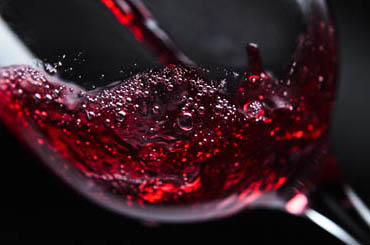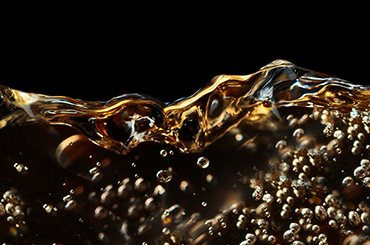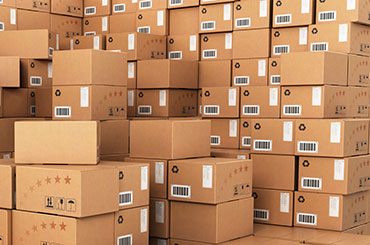Q: I’ve been into my wines in a serious way for more than 15 years now and take great pride in my collection. But one art I am yet to master is that of pairing wine with food. Too often I find myself underwhelmed by amazing wines only to find it was because of poor food matching. What are the principles for food and wine pairing? – Michael Rowe
A: There’s a can of worms and once you’ve sifted through them, there will still be no clear answer. There’s a lot of hogwash written and spoken on this subject, but there are very few hard and fast rules, or sure-fire matches. What is most true though is a) match weight and weight. Full-bodied wines with full-bodied flavours and vice-versa. And b) you’re not trying to match flavours, you’re trying to complement them. The trademark dusty, herbal characters of cabernet sauvignon, for instance, go so well with roast lamb for the same reason that sprigs of rosemary do. Think of foods that team well and then think of wines that could fulfil a similar function. A squeeze of lemon is delicious with white steamed fish, and so too is a lemony riesling.
Q: I recently acquired a bottle of 1962 Moulin Touchais chenin blanc, which I plan to serve at a special family gathering. Should I serve it with a savoury or sweet dish, and should it be chilled? – John Ellsmore
A: That should be quite an occasion. Hopefully it’s been stored well and the cork gods are smiling; obviously the older a wine is, the less guarantee there is that everything about the wine has gone to plan. Moulin Touchais chenin is bottled with quite a lot of residual sugar, but at this stage of the wine’s journey, such simple measurements become less relevant. Expect richness, but also versatility. It could probably go with either sweet or savoury, but until it’s opened and you see what condition it’s in, it’s hard to be definitive. It may be best savoured on its own. Personally I’d be going with either hard cheese or pork, and I’d want to chill it to cellar temperature rather than to fridge temperature – which is to say 14 degrees rather than four. Have fun!
Q: Chocolate and wine matching. I have read some ideas, but still not found ‘the one’. Even those degustation menus still miss the mark. Chocolate desserts seem the hardest to match. I have had meals where it all seems to work start to finish, however when chocolate is in the mix, no one seems to be able to match it. Do you have any suggestions? – Brett Cole
A: I’m with you. As a general rule it’s a lost cause. My main recommendation is that you should shelve the idea entirely. And I say this as someone who a) tucks into chocolate on more or less a daily basis and b) often does so with a glass of wine in the other hand. Do what I say, not what I do. Chocolate, of course, comes in many forms, is not always super-sweet, and can include salting and various flavourings, not to mention assorted hues. I don’t really think dry table wines, particularly reds, work well with any style of chocolate, though some crazy folks swear by cabernet sauvignon and even pinot noir with milk chocolate. There should be mandatory reporting of such practices, in my opinion, but alas society seems to turn a blind eye. I often pair sweeter, warm-climate shiraz wines with dark, high-cocoa chocolate. And while I wouldn’t say this ‘works’, it’s not so disastrous as to steer me away from doing it. Repeatedly. Of course, we’re getting closer to real classic territory here: vintage port, or sweet muscats and tokays, with semi and fully dark chocolate. Or even light, sweet, moscato-like whites with, well, white chocolate. In some ways here you’re trying to match intensity of wine flavour with intensity of chocolate flavour (lighter, younger muscat, for instance, with creamier not-so-dark chocolate) and in other ways you’re admitting the sweetness of chocolate cannot be overcome, and so if you can’t beat it, join it. And having said all that, in full awareness of the ridiculousness of both the suggestion and the practice, dark chocolate with aged whisky can make a majestic match. Believe it or not.
A: There’s a can of worms and once you’ve sifted through them, there will still be no clear answer. There’s a lot of hogwash written and spoken on this subject, but there are very few hard and fast rules, or sure-fire matches. What is most true though is a) match weight and weight. Full-bodied wines with full-bodied flavours and vice-versa. And b) you’re not trying to match flavours, you’re trying to complement them. The trademark dusty, herbal characters of cabernet sauvignon, for instance, go so well with roast lamb for the same reason that sprigs of rosemary do. Think of foods that team well and then think of wines that could fulfil a similar function. A squeeze of lemon is delicious with white steamed fish, and so too is a lemony riesling.
Q: I recently acquired a bottle of 1962 Moulin Touchais chenin blanc, which I plan to serve at a special family gathering. Should I serve it with a savoury or sweet dish, and should it be chilled? – John Ellsmore
A: That should be quite an occasion. Hopefully it’s been stored well and the cork gods are smiling; obviously the older a wine is, the less guarantee there is that everything about the wine has gone to plan. Moulin Touchais chenin is bottled with quite a lot of residual sugar, but at this stage of the wine’s journey, such simple measurements become less relevant. Expect richness, but also versatility. It could probably go with either sweet or savoury, but until it’s opened and you see what condition it’s in, it’s hard to be definitive. It may be best savoured on its own. Personally I’d be going with either hard cheese or pork, and I’d want to chill it to cellar temperature rather than to fridge temperature – which is to say 14 degrees rather than four. Have fun!
Q: Chocolate and wine matching. I have read some ideas, but still not found ‘the one’. Even those degustation menus still miss the mark. Chocolate desserts seem the hardest to match. I have had meals where it all seems to work start to finish, however when chocolate is in the mix, no one seems to be able to match it. Do you have any suggestions? – Brett Cole
A: I’m with you. As a general rule it’s a lost cause. My main recommendation is that you should shelve the idea entirely. And I say this as someone who a) tucks into chocolate on more or less a daily basis and b) often does so with a glass of wine in the other hand. Do what I say, not what I do. Chocolate, of course, comes in many forms, is not always super-sweet, and can include salting and various flavourings, not to mention assorted hues. I don’t really think dry table wines, particularly reds, work well with any style of chocolate, though some crazy folks swear by cabernet sauvignon and even pinot noir with milk chocolate. There should be mandatory reporting of such practices, in my opinion, but alas society seems to turn a blind eye. I often pair sweeter, warm-climate shiraz wines with dark, high-cocoa chocolate. And while I wouldn’t say this ‘works’, it’s not so disastrous as to steer me away from doing it. Repeatedly. Of course, we’re getting closer to real classic territory here: vintage port, or sweet muscats and tokays, with semi and fully dark chocolate. Or even light, sweet, moscato-like whites with, well, white chocolate. In some ways here you’re trying to match intensity of wine flavour with intensity of chocolate flavour (lighter, younger muscat, for instance, with creamier not-so-dark chocolate) and in other ways you’re admitting the sweetness of chocolate cannot be overcome, and so if you can’t beat it, join it. And having said all that, in full awareness of the ridiculousness of both the suggestion and the practice, dark chocolate with aged whisky can make a majestic match. Believe it or not.
Want a shot at glory and good wine? Email your questions to mail@winecompanion.com.au for your chance to feature in Halliday magazine and win some top-notch bottles.






